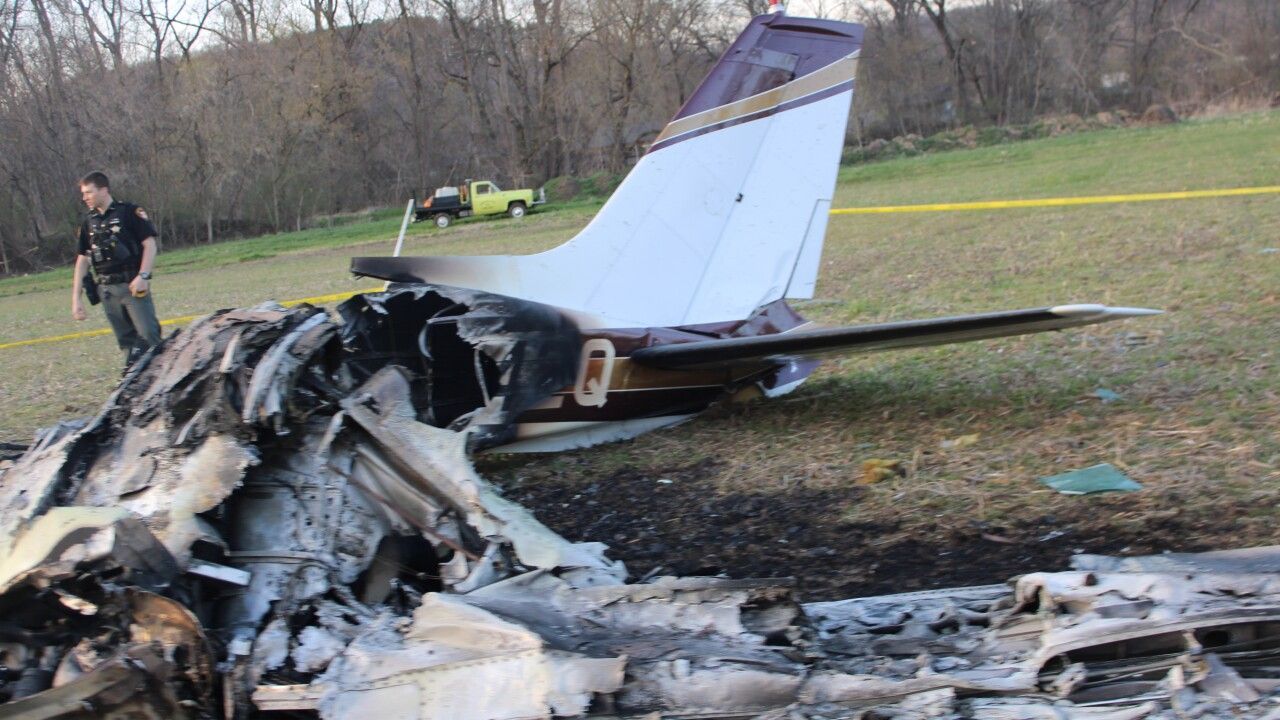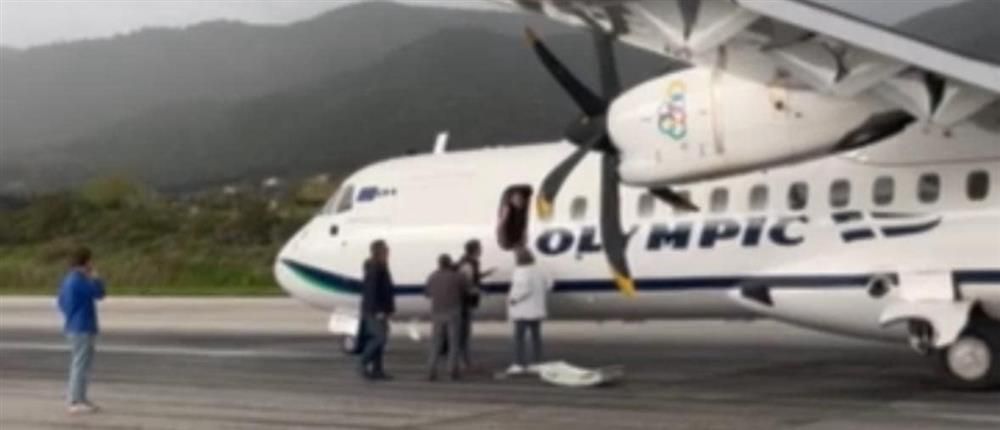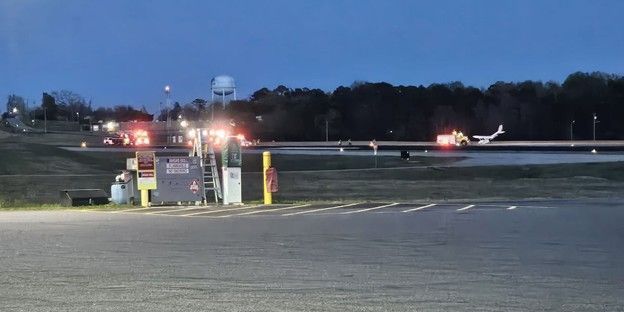ARFF Daily News
Published on:
Wednesday the 2nd of April, 2025
1 dead in plane crash in Tuscarawas County, OSHP says
By: Maya Morita
One person is dead after a plane crash occurred in Tuscarawas County Tuesday afternoon, according to the Ohio State Highway Patrol.
Around 5 p.m., officers responded to a farm field in Mill Township after a 1973 Cessna 310Q fixed-wing multi-engine plane reportedly crashed, OSHP said.
The aircraft was reported to have taken off from Harry Clever Field Airport at 4:40 p.m., OSHP said.
There was one occupant in the plane who died in the crash, OSHP said. The cause of the crash is unknown at this time.
The crash is still under investigation.
https://www.news5cleveland.com/news/local-news/1-dead-in-plane-crash-in-tuscarawas-county-oshp-says


Mytilene: Indication of a fire on a plane raised an alarm
Major mobilization by the Authorities for the safe landing of the plane carrying dozens of passengers on Lesvos.
An alarm was raised at the "Odysseas Elytis" airport in Mytilene when authorities were informed of a fire in an engine of an Olympic Air aircraft during landing on the morning Athens - Mytilene route.
According to initial information, the incident occurred while the plane was on the ground, causing an alarm among airport authorities.
The captain asked the passengers to exit the aircraft immediately, the emergency exit opened while the lights inside the aircraft went out.
The airport's fire department immediately rushed to the scene. The firefighters entered the aircraft . At the same time, the EKAB was also mobilized for precautionary reasons, however, so far, there are no reports of injuries.
According to initial reports, the fire department was informed by the Mytilene Airport Operations Center about "aircraft accident within the airport A3250. Total number of passengers 64, fire in engine 2. It has landed normally."
In a statement, AEGEAN states the following:
"AEGEAN informs that flight OA 250, operated by Olympic Air, from Athens to Mytilene with 59 passengers and 4 crew members, after landing showed signs of fire in one of the aircraft's engines . In accordance with procedures, the captain stopped the aircraft, informed the airport of the appropriate measures and proactively activated the evacuation process of the aircraft. All passengers disembarked safely. No fire was detected and the captain taxied the aircraft to its final parking position. The company is sending a new aircraft to pick up the passengers of the next flight to Athens, which will depart with a relative delay due to weather phenomena in the Mytilene airport area."

1 injured in plane crash at Hickory Regional Airport, officials say
Plane crashed off side of runway
By Spencer Chrisman
HICKORY, N.C. (WBTV) - Firefighters with the Hickory Fire Department responded to a plane crash in Hickory on Tuesday night, according to officials.
Officials said on Tuesday, April 1, just before 8 p.m., firefighters responded to a reported crash at the Hickory Regional Airport.
A spokesperson with the Hickory Fire Department said the plane crashed off the side of the runway, and the pilot was injured and taken to a hospital.
The cause of the crash has not been released at the time of this writing.
https://www.wbtv.com/2025/04/02/1-injured-plane-crash-hickory-regional-airport-officials-say/

NTSB Final Report: Dehavilland Beaver DHC-2 MK.1
While On A Post-Maintenance Check Flight, The Airplane’s Fuel Pressure Gauge Began To Fluctuate
Location: Fairbanks, Alaska Accident Number: ANC24LA037
Date & Time: May 27, 2024, 16:47 Local Registration: N5343G
Aircraft: Dehavilland Beaver DHC-2 MK.1 Aircraft Damage: Substantial
Defining Event: Fuel starvation Injuries: 2 None
Flight Conducted Under: Part 91: General aviation - Positioning
Analysis: The pilot reported that, shortly after takeoff while on a post-maintenance check flight, the airplane’s fuel pressure gauge began to fluctuate. Subsequently, the airplane experienced a total loss of engine power. The pilot performed a forced landing that resulted in substantial damage to the right wing and right elevator, which were both liberated from the airplane during impact.
A post-accident inspection revealed that the pilot had selected a fuel tank containing an inadequate amount of fuel prior to takeoff. The pilot reported that there were no preaccident mechanical failures or malfunctions with the airplane that would have precluded normal operation.
Probable Cause and Findings: The National Transportation Safety Board determines the probable cause(s) of this accident to be -- The pilot’s improper fuel management resulting in a loss of engine power due to fuel starvation.
FMI: www.ntsb.gov

Today in History
13 Years ago today: On 2 April 2012 UTair Aviation flight 120, an ATR 72-201, shortly after takeoff from Tyumen-Roschino Airport, Russia, killing 33 occupants; 10 survived the accident.
Date: Monday 2 April 2012
Time: 07:35
Type: ATR 72-201
Owner/operator: UTair Aviation
Registration: VP-BYZ
MSN: 332
Year of manufacture: 1992
Total airframe hrs: 35523 hours
Cycles: 49663 flights
Engine model: P&W Canada PW124B
Fatalities: Fatalities: 33 / Occupants: 43
Other fatalities: 0
Aircraft damage: Destroyed, written off
Category: Accident
Location: 1,6 km SW of Tyumen Airport (TJM) - Russia
Phase: Initial climb
Nature: Passenger - Scheduled
Departure airport: Tyumen-Roschino International Airport (TJM/USTR)
Destination airport: Surgut Airport (SGC/USRR)
Investigating agency: MAK
Confidence Rating: Accident investigation report completed and information captured
Narrative:
UTair Aviation flight 120, an ATR 72-201, stalled and crashed shortly after takeoff from Tyumen-Roschino Airport, Russia, killing 33 occupants; 10 survived the accident.
Flight 120 took off from Tyumen Airport runway 21 on a regular domestic passenger flight to Surgut (SGC). The ATR-72 climbed to a height of 210 m and then banked 35° left, followed by a 50° right hand bank. It then struck a snowy field approx. 1,6 km past the end of the runway, broke up and a fire erupted.
The Interstate Aviation Committee stated that both engines were working properly at the time of the accident.
The Federal Air Transport Agency reported that the airplane had been parked outside for eight hours in weather conditions which included snow and temperatures at and just below freezing level. The airplane was not de-iced prior to departure and the crew did not insist on being de-iced.
Causes:
The immediate cause of the ATR 72-201 VP-BYZ aircraft accident was the PIC's decision to takeoff without de/anti-icing treatment despite the fact that snow and ice deposits were present on aircraft surface and were discovered by the crew members during taxi which resulted in degradation of aircraft aerodynamic performance and stall during climbing after takeoff as well as inability of the crew to recognize stall and, consequently, failure to undertake recovery procedure.
The aircraft stall occurred at the operational angles of attack right after flaps retraction with engaged autopilot before stall warning system activation and was caused by the loss of the wing lift effectiveness due to takeoff with non-removed ground icing.
The system cause of the accident were shortcomings in ground handling activities and staff training in UTAir-Technik that became possible because of absence of due monitoring by the Technical and Operation Supervising Directorates of UTAir airline for compliance with airline requirements regarding ground handling and aircraft ground icing protection which resulted in erroneous evaluation of aircraft conditions by the PIC and aircraft mechanic (the shift head kept himself aloof from monitoring mechanic's activities) after the aircraft has been on ground in icing conditions for a long time and in release the aircraft to fly without de/anti-icing treatment.
The contributing factors were:
- The shortcomings in the UTAir safety management system, which contains, all in all, general issues only and is not adopted for the implementation of Airline activities in particular areas, which did not allow to reveal and correct existing safety risks in a timely manner.
- The shortcomings in the UTAir-Technic quality management system, resulted in neglecting of certain requirements of the UTAir ground handling management manual regarding staff training and monitoring for aircraft de/anti-icing treatment which led to the situation when not sufficiently-qualified staff performed the evaluation of the aircraft surface conditions and made the decision on need for the aircraft to be de-iced/anti-iced.
- The absence at the time of the accident of basic regulations in force that establish state requirements for ground handling (de/anti-icing treatment in particular) including staff training and organization licensing.
- The shortcomings in crewmembers initial and recurrent training as far as the danger of ground icing, its influence on the aircraft aerodynamic performance together with aircraft anti-icing system operation features and design are concerned that did not allow the crew to make the only appropriate decision to return for de-icing/anti-icing treatment after the observation of the snow and ice contamination on the wing after anti-icing system activation in de-icing mode while taxiing for takeoff.
- The methodological imperfection of the crew computer based and simulator training programs concerning the prevention of aircraft stall, identification of approach to stall and taking timely actions for recovery.
- The increasing need for number of flight crews to perform highly growing flights schedule which, with ineffective SMS, resulted in flight instructor work deficiencies during PIC training and absence of PIC skills to take correct decisions and to strictly comply with the regulations in force.
- The possible fatigue of the crew members due to the violation of the work and rest balance while performing split flight shifts together with a large number of unused days-off.
METAR:
01:30 UTC / 07:30 local time:
USTR 020130Z 24006G09MPS 9999 BKN013CB M01/M01 Q1002 TEMPO 26015MPS 1500 SHSN BLSN BKN005 RMK QFE742/0989 21290060 30750029
Wind 6 m/s (gusting to 9 m/s) at 240 degrees; Visibility: 10 km or more; Clouds: Broken, at 1300 feet above aerodrome level, cumulonimbus; Temperature: -01 degrees Celsius; Dewpoint: -01 degrees Celsius; QNH (Sea-level pressure): 1002 hPa; The following weather phenomena are expected to arise temporarily: Wind: 260 degrees, Speed: 15 m/s; Visibility: 1500 m; Weather: Showers of Snow; Clouds: Broken sky, at 500 feet above aerodrome level; Runway state: Runway 21: wet or water patches, contamination 51% to 100%, deposit less than 1 mm deep, friction coefficient 0.60

